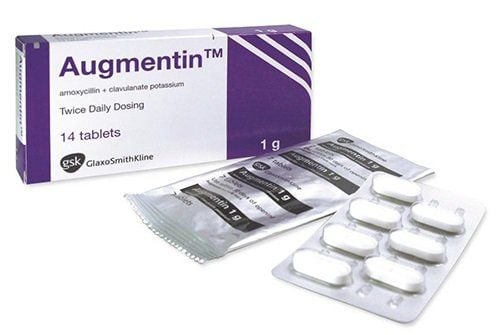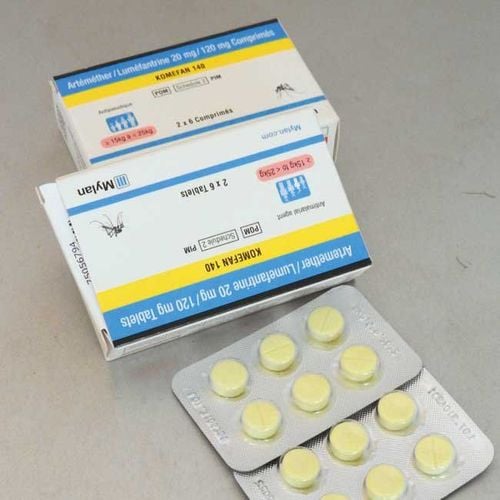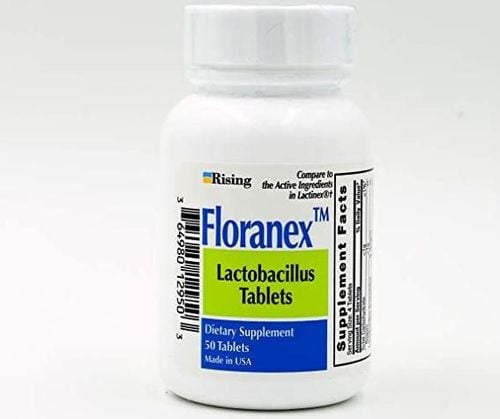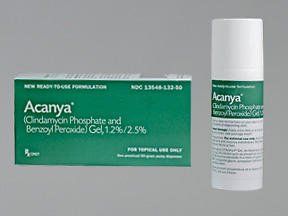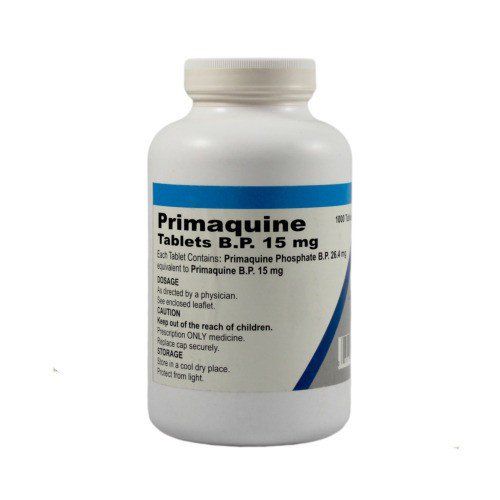This is an automatically translated article.
Vibramycin is an antibiotic belonging to the tetracyclines group. Vibramycin is used to treat bacterial infections. Detailed information of the drug Vibramycin is presented in the article below.
1. What is Vibramycin?
Doxycycline ingredient in Vibramycin is an antibiotic belonging to the tetracyclines group. The drug is prepared in the form of:
Capsules, content of 50mg, 100mg for oral use. Powder for injection, content of 100mg, 200mg used by injection, intravenous infusion. Mechanism of action: Doxycycline kills bacteria by binding to the 30S ribosomal subunit, inhibiting bacterial protein synthesis. Doxycycline has bacteriostatic activity against a wide range of Gram-negative and Gram-positive bacteria.
2. What are the uses of Vibramycin?
Vibramycin is used to treat or prevent infections caused by bacteria, such as:
Treatment: acne, nodules, intestinal infections, urinary tract infections, eye infections, diseases gonorrhea, chlamydia, periodontitis Treatment: bumps, acne-like lesions caused by rosacea, anthrax, infections caused by ticks, lice. Prevent malaria.
3. Dosage of Vibramycin
The dose of Vibramycin depends on the nature and severity of the infection.
Adults:
Usual oral dose: first day 200 mg/day, divided into 2 divided doses, then 100 mg x 1 time/day. If severe infection: maintain dose 200 mg/day Treatment of gonorrhea without complications: Oral 100 mg x 2 times/day, for 7 days; or oral 300 mg once, then 1 hour another dose of 300 mg. Syphilis treatment: Oral 100-200 mg x 2 times/day, for at least 14 days. For people who have had syphilis for more than 1 year: 100 mg x 2 times / day for 28 days. Prevention of leptospirosis: 200 mg orally once a week, while in the at-risk area, for 21 days and 200 mg when leaving the area. Malaria prevention: Take 100 mg x 1 time / day, start taking 1-2 days before arriving in the malaria area, continue taking it daily, and 4 weeks after leaving the malaria area. Treatment of malaria caused by chloroquine-resistant falciparum: Oral 3 mg/kg x 1 time/day, for 7 days, in combination with quinine. Treatment of brucella: Orally 100 mg twice daily for 6 weeks, along with rifampin or streptomycin. Treatment of periodontitis: Take 20 mg x 2 times / day. Prophylaxis of anthrax in patients sensitive to penicillin or ciprofloxacin: 100 mg twice daily for 60 days. Combine with 1-2 other antibacterial drugs. Treatment of urethritis not caused by gonorrhea: Oral 100 mg x 2 times / day, for 7 days. Treatment of adnexitis, endometritis, peritonitis: 100 mg intravenously twice daily, along with cefoxitin 2g every 6 hours, for 4 days and an additional 48 hours after improvement of the condition benevolent. Then continue to take 100 mg x 2 times / day, for 10-14 days. Treatment of Chlamydia without complications: Oral 100 mg x 2 times / day, for at least 7 days. Treatment of Lyme disease (caused by spirochetes Borrelia burgdorferi), tularemia (caused by Pasteurella tularensis), Q fever (caused by Coxiella burnetii): Oral 100 mg x 2 times/day, for 14-21 days. Treatment of rickettsia: Oral 100 mg x 2 times / day, for 7-14 days. Treatment of red nose disease: Take 40 mg x 1 time / day. Intravenous infusion dose: the first day 200 mg, divided 1 - 2 times, the following days 100 mg - 200 mg. Children:
Usual dose: Children over 8 years old weighing less than 45 kg: the first day, take 4 - 5 mg/kg/day, divide into 2 doses, then take 2 - 2.5 mg/kg x 1 time/day. day (maximum 200 mg/day). For severe disease, oral dose of 2-2.5 mg/kg x 2 times/day. In children over 8 years old weighing more than 45 kg: Dosage as adults. Malaria prevention in children over 8 years old: Oral 2 mg/kg/day (maximum 100 mg/day), start taking 1-2 days before entering the disease area, continue taking daily and 4 weeks after leave the disease area. Prevention of anthrax in children under 8 years old and children over 8 years old weighing less than 45 kg: 2.2 mg/kg x 2 times/day, for 60 days. In children over 8 years of age weighing more than 45 kg: the same dose as adults. Intravenous dose: Children weighing less than 45 kg 4.4 mg/kg on the first day, then reduce the dose. Other subjects:
Renal failure: no need to reduce the dose, because doxycycline is not only eliminated by the kidneys, but also through the liver, biliary tract and gastrointestinal tract.
4. Usage of Vibramycin
Oral tablet form: take Vibramycin with a full glass of water. It is best taken on an empty stomach, at least 1 hour before or 2 hours after a meal. Swallow the tablet whole, do not crush, chew, or open it.
Powder for injection: for injection, intravenous infusion. Do not use intramuscularly because of local irritation and malabsorption.
5. Contraindications of Vibramycin
Do not use Vibramycin if you are allergic to Doxycycline or other tetracycline antibiotics.
6. Side effects of Vibramycin
Gastrointestinal side effects: caused by both oral and parenteral administration
Anorexia, nausea, vomiting Abdominal pain, diarrhea Glossitis, dysphagia, enteritis, anorectal inflammation, pancreatitis. Toxicity on the liver. Teeth discoloration in adults, reversible upon discontinuation of the drug. Permanent tooth discoloration and enamel hypoplasia may occur when Vibramycin is used during tooth development. Skin side effects:
Papules, erythema, exfoliative skin, increased photosensitivity Renal toxicity: increased nitrogen content of urea (BUN)
Side effects on immunity:
Urticaria, edema vascular, anaphylaxis, purpura Pericarditis, exacerbation of systemic lupus erythematosus, allergic reactions (rash, difficulty breathing, swelling of the face and throat) Other side effects:
fontanelles in children neonatal, increased intracranial pressure in adults Chest pain, irregular heartbeat, shortness of breath, little or no urinating Fever, chills, body aches, swollen glands, weakness, pale skin, easy bruising , bleeding Blood side effects:
Hemolytic anemia, thrombocytopenia. Eosinophils increased, neutrophils decreased.
7. Notes when using Vibramycin
Use Vibramycin for the prescribed length of time, even if symptoms have improved. Skipping doses can increase the risk of drug resistance. Vibramycin does not treat viral infections such as the flu or the common cold. Vibramycin can cause permanent yellowing of teeth in children under 8 years of age. Children should only use the medicine in cases of serious or life-threatening illnesses such as anthrax or Rocky Mountain spotted fever. Taking Vibramycin during pregnancy may affect the development of teeth and bones in the unborn baby. Taking Vibramycin during the second half of pregnancy may cause permanent discoloration of the baby's teeth later in life. Doxycycline can pass into breast milk and affect the development of bones and teeth in babies. Do not breast-feed while taking this medicine. Tell your doctor if you have ever had: liver disease, kidney disease, asthma, sulfite allergy, raised intracranial pressure, esophageal problems. Vibramycin makes you more susceptible to sunburn. Wear protective clothing and use sunscreen when outdoors. Long-term or repeated use of the drug can cause oral thrush or a new vaginal yeast infection.
8. Vibramycin drug interactions
Drugs that can interact with Vibramycin include: oral retinoids (acitretin, isotretinoin), barbiturates (phenobarbital), blood thinners (warfarin), digoxin, anti-seizure drugs (phenytoin), strontium.Vibramycin reduces plasma prothrombin activity, patients on anticoagulants should have their anticoagulant dose adjusted down.
Do not take Vibramycin concurrently with any other antibiotic.
Barbiturates, carbamazepine, phenytoin reduce the half-life of the drug.
Concomitant use of tetracycline and methoxyflurane can lead to fatal kidney toxicity.
Vibramycin may decrease the effectiveness of oral contraceptives.
Doxycycline may cause live bacterial vaccines (such as typhoid vaccine) to work ineffectively.
Do not take iron supplements, multivitamins, calcium, antacids or laxatives within 2 hours before or after taking Vibramycin. Because they bind to Doxycycline, preventing the body from absorbing the drug. Vibramycin is an antibiotic used to treat infections caused by bacteria. However, when using the drug, it is advisable to follow the schedule advised by the doctor, to be safe, effective and avoid drug resistance. Contact your doctor if you have any questions about Vibramycin.




